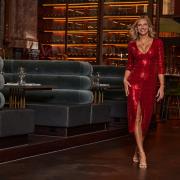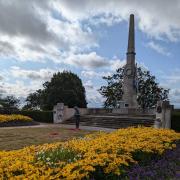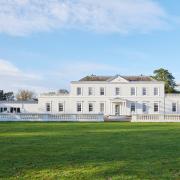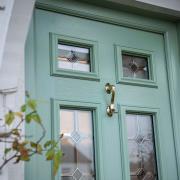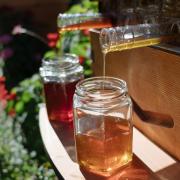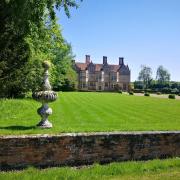Not to be confused with Hatfield Peverel, Hatfield Broad Oak (or Hatfield Regis as it was later known as) is the parish where the historical house Down Hall sits.
Originally a mediaeval manor, a lot has changed today at Down Hall. As with many ancient pockets of land in Essex the area had lots of ties with royalty. After the Battle of Hastings in 1066 Hatfield fell into the ownership of William the Conqueror, a Norman French king who defeated Saxon king Harold II. During the reign of Edward the Confessor from 1042-1066 the estate of Dunhall as it was known was owned by Ulwin, Thegn of Edmund Atheling.
During the next reign King William placed no less than 14 manors under the ownership of Aubrey de Vere and Down Hall was one of them. Aubrey de Vere was William the Conqueror’s brother-in-law and helped coordinate some of the Norman soldiers at the Battle of Hastings. According to the Domesday Book, Aubrey de Vere was the King and Queen’s Chamberlain and his son, also named Aubrey de Vere was knighted the Ist Earl of Oxford by King Henry I in 1133. Despite their misleading surname, the de Vere family remained East Anglia based and very powerful and landed in the Essex area for some time.
The Priory of Hatfield, of which Down Hall was included, was dissolved in 1536 during the Suppression of the Monasteries when King Henry VIII essentially closed all the monasteries when he parted with Catholic Rome.

The Priory of Hatfield that included Down Hall was passed over to Barking Abbey.
The subsequent owners of Down Hall, post the reformation, were a local family called the Glascocks. William Glascock had been associated with the infamous Sir Richard Rich whose fingerprints were all over Essex during that period. He can be described as a ‘fixer’ to the monarch of the age, Henry VIII.
William’s son, Richard had the building remodelled in the Tudor style, possibly in anticipation of his imminent nuptials.
The building we see today is a Victorian structure and is currently run as a hotel. Down Hall is accompanied by 110 acres of land including woodland, parkland as well as landscaped gardens - some of which was managed by the Essex Wildlife Trust.
The first Down Hall house was a Tudor building and was owned by the poet and diplomat Matthew Prior during the eighteenth century. Prior commissioned his friend Charles Bridgeman to landscape the grounds and the celebrated architect of the 18th century James Gibbs to design the house.
Gibbs was born in Scotland, trained in Rome and practised mainly in England. Gibbs was influenced by the English Baroque and Georgian architecture.

Charles Bridgeman came before Capability Brown whose talent it is said to have been comparable. Sadly, Matthew Prior died a year after buying the property and Down Hall then passed to his friend Edward Harley, the second Earl of Oxford.
Harley continued the work his friend Prior had started. But Harley was an obsessive collector of objets d’art and in 1740, a year before his death the family had to sell Wimpole Hall, a house in Cambridgeshire that he had inherited through his wife Lady Henrietta Cavendish to pay his debts.
Lady Henrietta was daughter of the Duke of Newcastle and at the time of their marriage, the wealthiest heiress in England with an estimated fortune of £500,000.On Harley’s death in 1741, the building work at Down Hall, twenty years on, was still not completed.
The next owner of Down Hall was William Selwin who purchased it for £3,000.
Selwin was a wealthy silk merchant from London.

The Selwins oversaw and commissioned the entire rebuild of the house in the late 1760s, replacing Prior’s vision with a more simple classical style.
The house was rebuilt again one hundred years on by the Selwins. The house and surrounding estate remained in the Selwin family until 1902 when the bloodline died out. Sir Henry Selwin-Ibbetson, Ist Baron Rookwood served under former Prime Minister Benjamin Disraeli in two important roles and is best known locally for his help in securing Epping Forest for the public.
During the First World War Down Hall was used as a sanitorium for wounded soldiers.
After the war the estate was sold at auction and subsequently used as a school named Downham College from 1932 to 1967.
It was a private boarding school for girls and had the reputation for concentrating more on the securement of advantageous marriages than the education of the girls who attended it.
Clarissa Eden, second wife of Anthony Eden, the former Prime Minister whose maiden name was Spencer-Churchill described Downham Hall in her memoir published in 2007 as “a fashionable boarding school… orientated to horses.” Clarissa did not enjoy her time at the school and left early and pursued her not insignificant studies elsewhere. Frances Shand Kydd, Diana, Princess of Wales mother, was also a pupil at Downham Hall and was a very accomplished tennis player. A run in with appendicitis stood in the way of her playing for Wimbledon. The pupils at Downham School read like a copy of Debrett’s; Pamela Harriman, future daughter-in-law of Winston Churchill was another pupil alongside Lady Caroline Blackwood, a writer, socialite and muse whose first marriage (later annulled) was to the artist Lucian Freud.

When Down Hall was sold it then became a conference centre and antiques business premises during the period of 1967-1986 and then it was sold to the Veladail group who have been operating it as a hotel and conference centre ever since. Famously the late Jade Goody, former dental nurse and all round Essex celebrity married her partner Jake Tweed at Down Hall in a ceremony in 2009. Jade Goody sadly died of cervical cancer shortly afterwards and once referred to East Anglia as East Angular and even thought it was abroad. This lapse of knowledge did not stop Jade from amassing an impressive £8million fortune. She was a big personality and her untimely passing was tragic to say the least.
That was not to be the end of Down Hall’s brush with fame. Series eleven and twelve of The Great British Bake Off was filmed at Down Hall. Due to Covid 19 restrictions the entire filming team had to isolate with each other on the premises for six weeks. I imagine with such salubrious culinary guests and no doubt a fabulous kitchen at their disposal this may not have been such a hardship!




